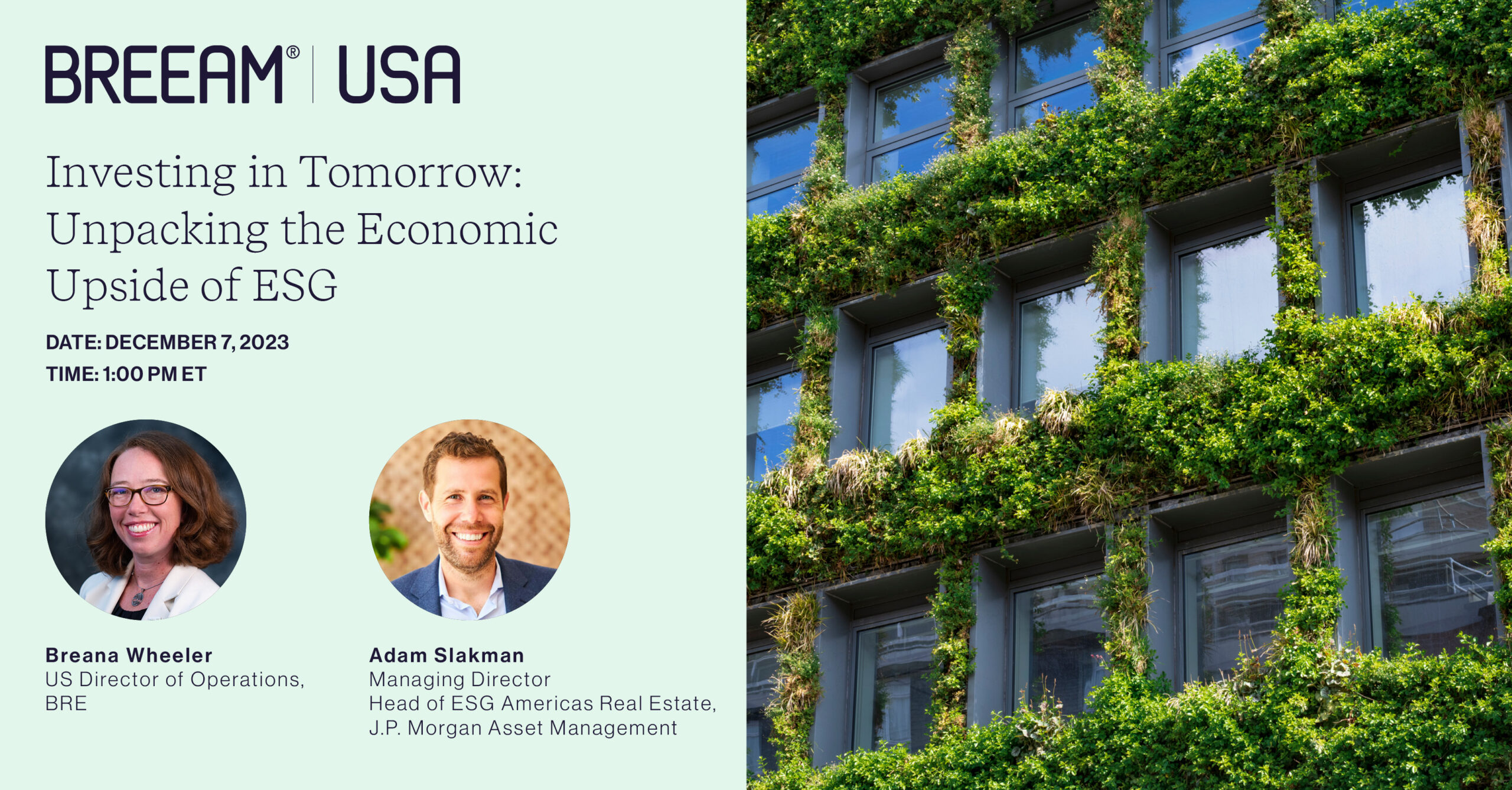Unpacking ESG Upside with BREEAM and J.P. Morgan
As more investors incorporate sustainable considerations into their evaluation of potential investments, real estate owners and operators are wrestling with pressing questions.
As more investors incorporate sustainable considerations into their evaluation of potential investments, real estate owners and operators are wrestling with pressing questions. What sustainability initiatives can also enhance financial returns? How can a sustainable strategy be adjusted to turn the focus from risk to opportunity? How can my portfolio balance ESG progress while protecting — or better yet, furthering — the bottom line?
In the latest installment of BREEAM USA’s ESG Webinar Series — “Investing in Tomorrow: Unpacking the Financial Case for ESG” — Adam Slakman sat down for a fireside chat to share his insights as Managing Director and Head of ESG Americas Real Estate at J.P. Morgan with Breana Wheeler, Director of U.S. Operations at BREEAM. Adam detailed how a strategic approach to sustainability hinges on accelerating sustainable efforts while safeguarding stakeholder value. The duo went on to discuss how to explore which material factors are worth prioritizing, underscoring how ESG initiatives can both mitigate risk and add value for asset owners and stakeholders.

Throughout the conversation, Wheeler and Slakman offered valuable insights informed by combined decades of experience in the real estate and sustainability sectors, including:
1. Many ESG and resilience initiatives can not only protect, but also boost asset value and provide strong ROI as tenants work towards net-zero goals:
2. Investors are scrutinizing core, asset-level metrics more closely than ever before; be prepared with comprehensive, holistic performance data:
Slakman noted that, in general, investors have grown far more sophisticated with more targeted and expansive questions in recent years. “Years back, I’d get three-to-five easy ‘yes/no’ sustainability queries that I could briefly respond to,” he said. “Now, it’s pages of thoughtful prompts looking for detailed explanations.”
3. As the financial impact of climate risk increasingly affects asset value, many stakeholders are zeroing in on resilience as a key component for a successful sustainable strategy:
Wheeler noted that physical climate risks — and consequently, adaptation and resilience — now have real financial impacts. “Due to heightened climate risks in geographies like California, we now see insurance availability shrinking and costs rising, outpacing rents and inflation,” she said.
If you missed the webinar, no need to worry — you can view the full recording here.
Do you want to hear more from BREEAM in the US and around the world?
Sign up for our newsletter to receive the latest news from our world-leading experts and access alerts about upcoming webinars and events.
Share
Tags
BREEAM USA news
Browse other BREEAM USA news

Retail Market Breakdown: Sustainability Trends and Outlook

Championing Biodiversity for Real Estate

Key Takeaways from Climate Week NYC 2024

BREEAM New Construction Version 7 technical manual and summary of changes document

Navigating Sustainability: Insights from BREEAM and GRESB Leaders
Get in touch
Contact us now or call us on +14152981619 if you would like to talk to our team about how BREEAM can support you.
Return to BREEAM USA Homepage